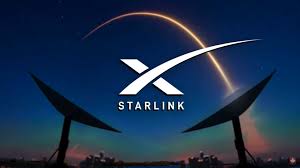Starlink: Bridging the Global Digital Divide

In today’s hyper-connected world, access to reliable internet is more than just a luxury—it’s a necessity. However, millions of people worldwide, especially in rural and remote areas, still struggle with slow or even nonexistent internet access. Enter Starlink, SpaceX’s ambitious satellite internet project aimed at bringing high-speed internet to every corner of the Earth.
What is Starlink?
Starlink is a satellite internet service operated by SpaceX. Unlike traditional broadband that relies on ground-based infrastructure, Starlink uses a constellation of low Earth orbit (LEO) satellites to provide fast and reliable internet, regardless of your location on the planet. With over 1,000 satellites already in orbit and plans to scale that number into the tens of thousands, Starlink is poised to change the way we think about internet connectivity.
How Does It Work?
Starlink works by using a network of satellites that orbit just 340 miles above the Earth’s surface—much closer than traditional satellites, which orbit at around 22,000 miles. This lower altitude reduces latency, allowing for faster speeds and more reliable connections. The satellites beam data to ground stations, which then relay the signal to users’ Starlink dishes (the small, circular satellite dish that connects to the network). This technology makes Starlink particularly useful in regions where laying physical cables is impractical or too costly.
Why Is It a Game Changer?
-
Global Coverage: Whether you live in a bustling city or a remote village, Starlink promises to deliver internet access virtually anywhere on Earth, even in places with rugged terrain or where traditional internet infrastructure doesn’t reach.
-
High-Speed Internet: Starlink’s speeds range from 50 Mbps to 200 Mbps (with future plans for even faster speeds), making it competitive with many fiber-optic and cable broadband services. The low latency (as low as 20 ms) is another key feature that sets Starlink apart from older satellite internet technologies, which typically suffer from much higher latency.
-
Disaster Recovery: In the aftermath of natural disasters, when communication infrastructure is often the first to go down, Starlink can provide immediate internet access to emergency response teams and affected communities, helping to speed up recovery efforts.
-
Affordable for Rural Areas: Traditional broadband providers often charge hefty prices for services in rural locations due to the cost of infrastructure. Starlink’s satellite-based system has the potential to offer a more affordable solution for those who have been overlooked by traditional internet providers.
Challenges and the Road Ahead
While Starlink has made incredible progress, it’s not without its challenges. The initial setup can be expensive (the user terminal costs around $499), and some users have reported intermittent service or slower speeds during peak usage times. There’s also the concern of space debris—SpaceX is working on making their satellites more sustainable by ensuring they deorbit themselves when they’re no longer in use.
Additionally, Starlink’s availability is still limited in some regions, and there are ongoing efforts to secure regulatory approvals in different countries. However, SpaceX is actively expanding its coverage and working on improving the service, so the future looks promising.
The Future of Starlink
Looking ahead, Starlink’s potential is vast. Beyond individual consumers, SpaceX is aiming to provide connectivity to businesses, ships, airplanes, and even remote scientific stations, making it a cornerstone of future global communications. With continued innovation and the scaling up of its satellite constellation, Starlink has the potential to help bridge the digital divide, ensuring that everyone, everywhere, has access to the internet.



